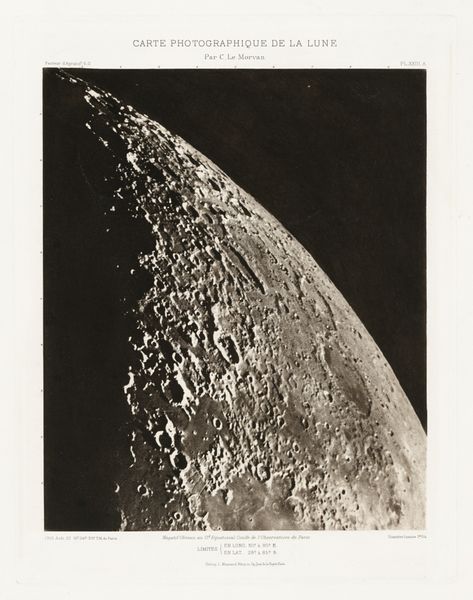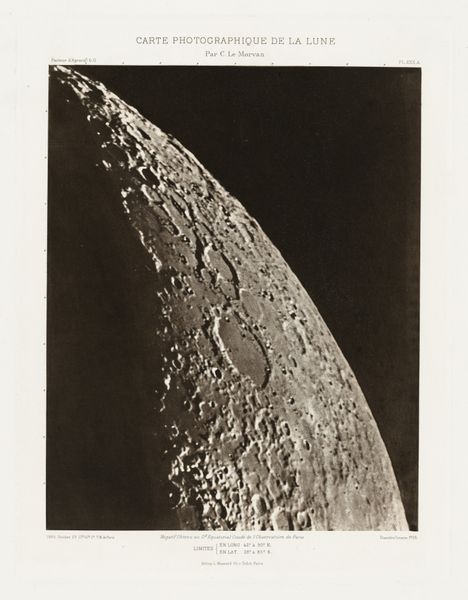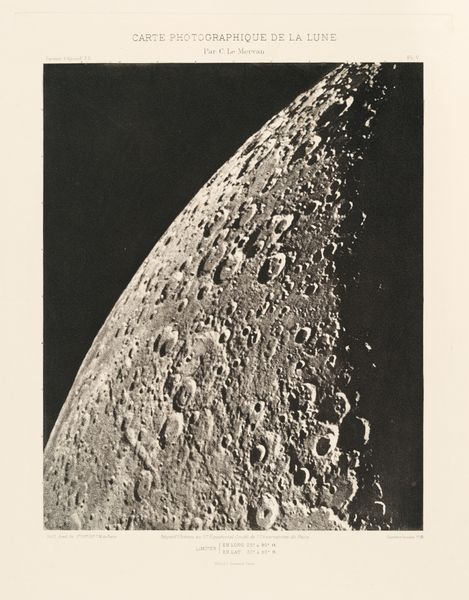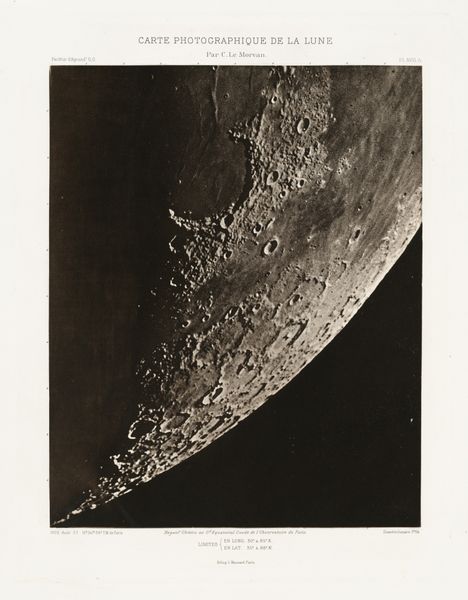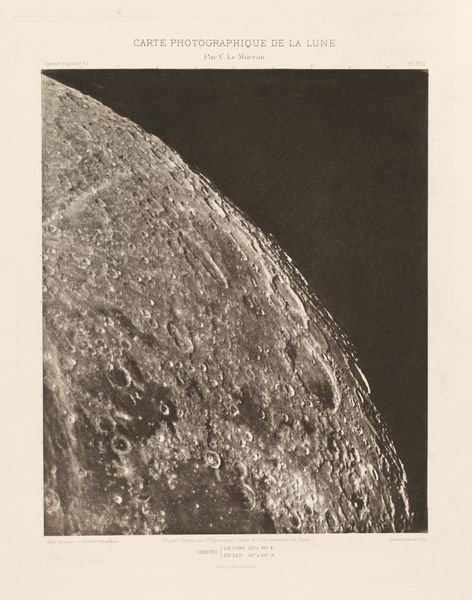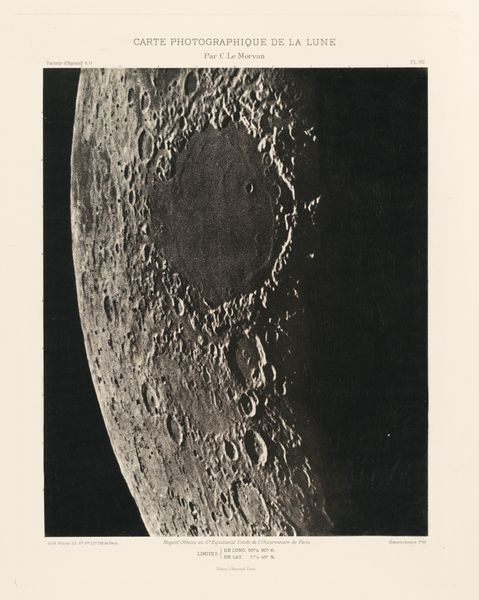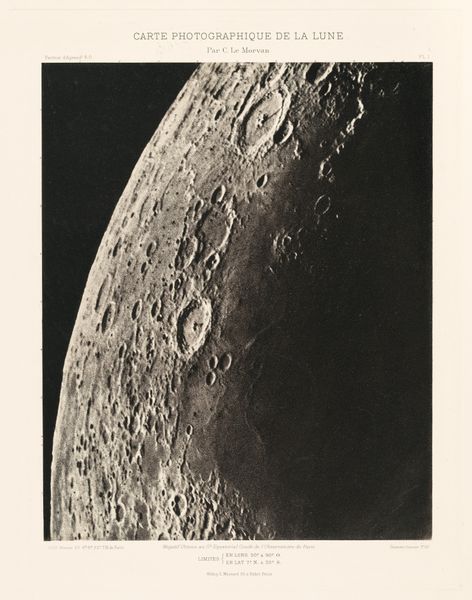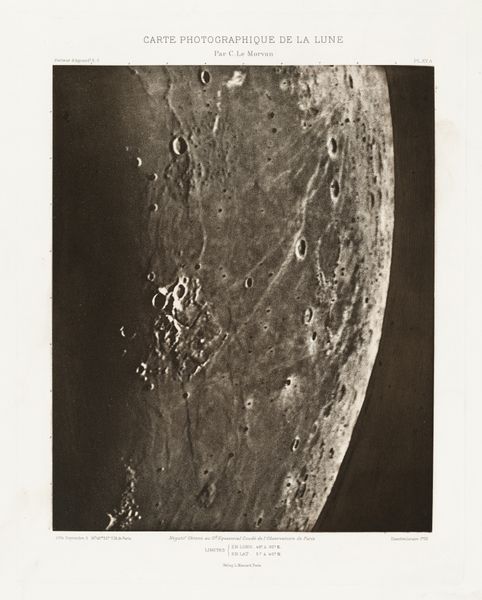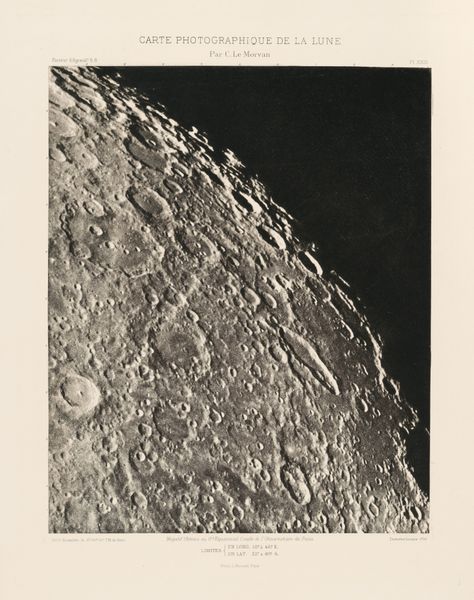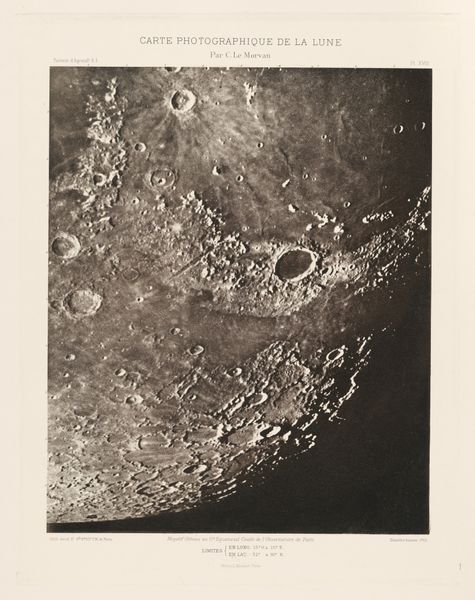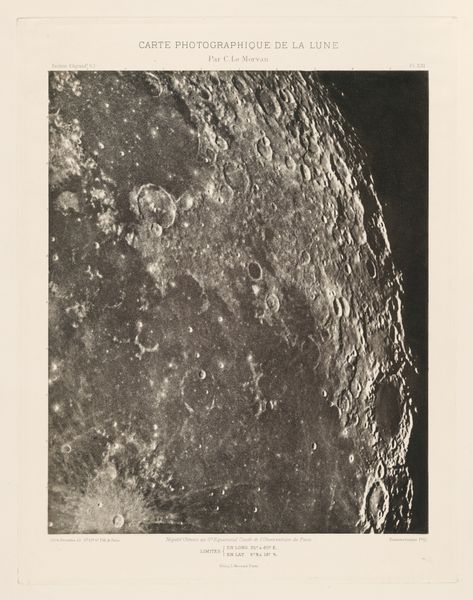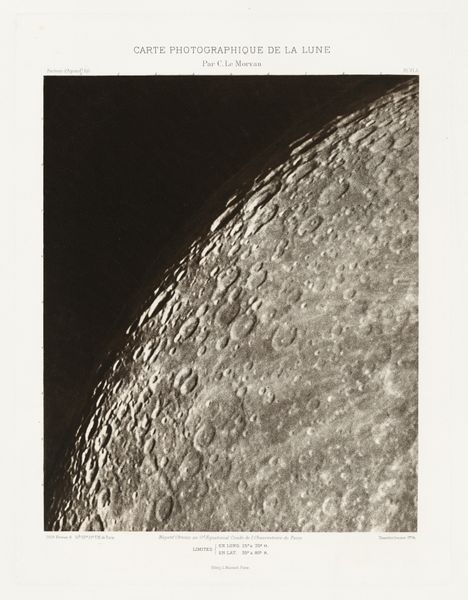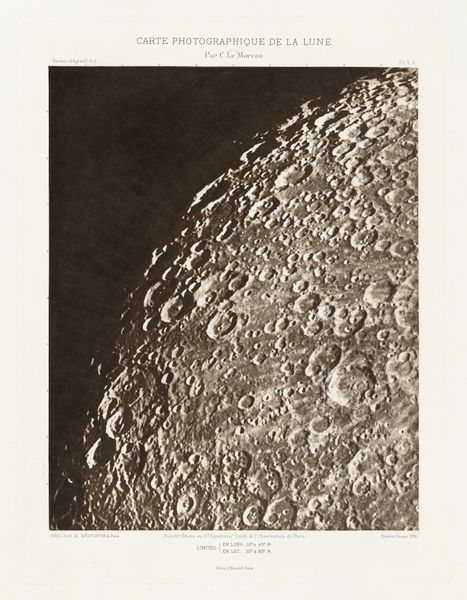
Carte photographique de la lune, planche VI (Photographic Chart of the Moon, plate VI) Possibly 1901 - 1914
0:00
0:00
photogram, print, photography
#
photogram
# print
#
landscape
#
photography
#
academic-art
#
realism
Dimensions: image: 31.1 × 25.5 cm (12 1/4 × 10 1/16 in.) plate: 38.9 × 29.5 cm (15 5/16 × 11 5/8 in.) sheet: 49 × 37.9 cm (19 5/16 × 14 15/16 in.) tissue: 42.55 × 37.47 cm (16 3/4 × 14 3/4 in.)
Copyright: National Gallery of Art: CC0 1.0
Curator: This arresting image immediately draws me in with its stark contrasts—the luminous curve against the inky void. It feels ancient, almost primordial. Editor: Indeed. What we are looking at is a photogram print entitled "Carte photographique de la lune, planche VI," or "Photographic Chart of the Moon, plate VI," possibly created between 1901 and 1914 by Charles Le Morvan. Curator: A chart, you say? That suggests a scientific purpose, stripping away any romanticism often associated with lunar images. But it’s not sterile; it's far more evocative. Look at the play of light and shadow. It’s intensely dramatic. The moon, as an archetype, is potent. Editor: The rise of photography had a fascinating impact on both art and science. In art, it challenged established notions of realism in painting. Meanwhile, science used photography to achieve an unparalleled accuracy in fields such as astronomy. So it serves simultaneously as data and a form of visual poetics. Curator: And that poetry is steeped in symbolism. The moon itself embodies cyclical change, hidden aspects of the self. This fragment—the plate emphasizes its incompleteness— invites us to ponder the unseen, the unknowable. Consider too that the moon’s orbit affects tidal change on Earth; It is not passive, but generative. Editor: Precisely. These charts emerged during a time when institutions like observatories were gaining power in shaping what and how we see. So while this artwork embodies this moment of scientific positivism, in terms of photography it opened new representational forms, shaping the visual lexicon that we recognize today. Curator: It is a potent reminder of our human drive to explore, classify, and ultimately understand the cosmos—but through aesthetic vision that still respects mystery. I now see those lunar symbols less as archetypes, and more as placeholders for cosmic awe. Editor: For me, examining this print highlights that relationship between institutions and artistic experimentation; its effect still felt in how we depict our own earthbound landscapes and the infinite world outside it.
Comments
No comments
Be the first to comment and join the conversation on the ultimate creative platform.
